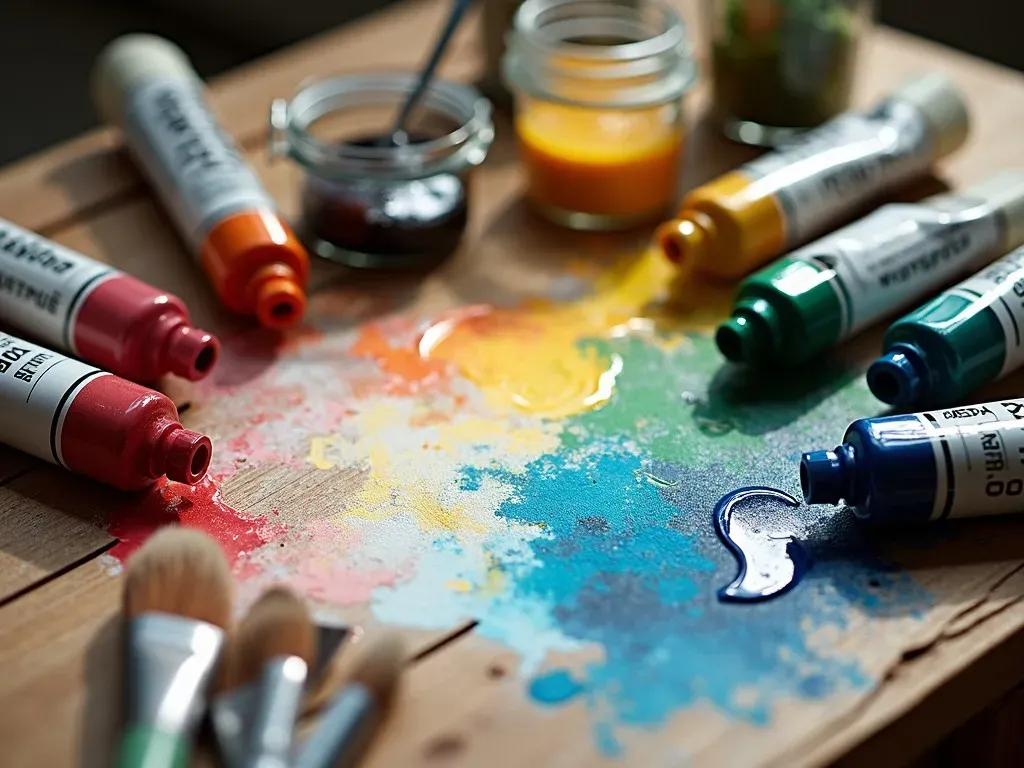Oil paint is a type of slow-drying paint that consists of particles of pigment suspended in a drying oil, commonly linseed oil. This medium has been favored for centuries in Western art for its vibrancy and versatility. However, many artists might not fully grasp the complexities of oil paint ingredients. In this article, we delve deep into what constitutes oil paint, how it is made, and the various components that play a crucial role in its performance.
The Core Components of Oil Paint
Oil paints typically consist of three main ingredients: pigments, drying oils, and sometimes solvents. Understanding these components is essential for artists to choose the right oil paints that suit their artistic style and project requirements.
Pigments
Pigments are the coloring agents found in oil paints. They can be derived from natural sources (like minerals and plants) or synthetic materials. Here’s a quick overview of some common pigment types:
| Pigment Type | Common Examples | Characteristics |
|---|---|---|
| Organic | Cadmium Red, Alizarin Crimson | Bright, vibrant colors but can be less lightfast |
| Inorganic | Titanium White, Ultramarine Blue | Excellent lightfastness and opacity |
| Mineral | Sienna, ochre | Earth tones, usually more muted but very stable |
| Synthetic | Phthalo Blue, Quinacridone Violet | Highly saturated and often more affordable |
Drying Oils
The drying oil, most commonly linseed oil, acts as a binder, helping to suspend the pigments and allowing the paint to adhere to the painting surface. Other oils used can include walnut oil and poppy seed oil, each offering unique properties:
| Type of Drying Oil | Characteristics | Use Cases |
|---|---|---|
| Linseed Oil | Fast-drying, yellow tinge | General-purpose oil paints |
| Walnut Oil | Slower drying, less yellowing | Fine art applications, retains color clarity |
| Poppy Seed Oil | Very slow drying, light in color | Ideal for white pigments, delicate tones |
Solvents
While not always necessary, solvents are sometimes incorporated to modify the paint’s viscosity or to clean brushes and tools. Popular solvents include turpentine and mineral spirits.
- Turpentine: Derived from pine resin, used to thin paint but can be odorous and irritating.
- Mineral Spirits: A petroleum-derived alternative that is less aggressive on brushes but may not mix as thoroughly with pigments.
The Process of Making Oil Paint
To understand how these ingredients come together, we should dive into the oil paint manufacturing process, which involves both art and science.
-
Preparation of Ingredients:
- The selected pigment is finely ground in a mortar until it reaches the desired consistency.
- The drying oil is then prepared, often filtered to remove impurities.
-
Mixing:
- A suitable ratio of pigment and drying oil is combined, usually around 1:1 for a typical oil paint, but this can vary based on pigment characteristics and desired texture.
- Mixers or grinding stones are often used to ensure a smooth consistency that enhances blendability.
-
Adding Solvents (if needed):
- If a thinner consistency is desired, the mixture can then incorporate solvents gradually while continuously mixing until the required fluidity is achieved.
-
Packaging:
- The final paint is either filled into tubes or jars, ready for distribution and use by artists.
The Chemistry Behind Drying
One of the unique qualities of oil paint is its method of drying. Unlike water-based paints, oil paints dry through a process called oxidation. The unsaturated bonds in the oil react with oxygen in the air, leading to a hard, flexible film that binds the pigments together. This chemical reaction is slow, allowing artists plenty of time for blending and layering colors.
Ingredient Variation by Brand
Different brands may use varying grades of pigments, drying oils, and additives, which can significantly influence the paint’s quality and performance. For instance, a brand offering "professional grade" oil paints might utilize higher-quality pigments and a better formulation of oils compared to student-grade products.
Common Additives
Moreover, certain additives may be included to enhance the paint’s properties:
| Additive | Purpose |
|---|---|
| Driers | Speeds up the drying process |
| Wax | Improves texture and opacity |
| Fillers | Affects body and coverage of the paint |
FAQs About Oil Paint Ingredients
1. What is the primary ingredient in oil paint?
The primary ingredient is pigment suspended in a drying oil, with linseed oil being the most common.
2. Why does oil paint take so long to dry?
Oil paint dries through an oxidation process, which is considerably slower than evaporation-based drying methods used in watercolors and acrylics.
3. Can oil paint ingredients vary between brands?
Yes, different brands may use various quality levels of pigments, oils, and additives which can affect the paint’s performance and cost.
4. Is it safe to use solvents with oil paint?
While solvents are commonly used, some can be harmful due to fumes. Proper ventilation and protective gear are recommended when using oil paints and solvents.
5. How does the choice of oil affect oil paint performance?
Each oil offers different drying times, clarity, and flexibility, influencing Techniques and finishes that artists can achieve.
For detailed information about oil paints and their make-up, refer to Natural Pigments.
Using this knowledge of oil paint ingredients can empower artists to make informed choices that significantly enhance their painting experience. The more you understand what’s inside your paint, the better you can utilize it to its full potential.
